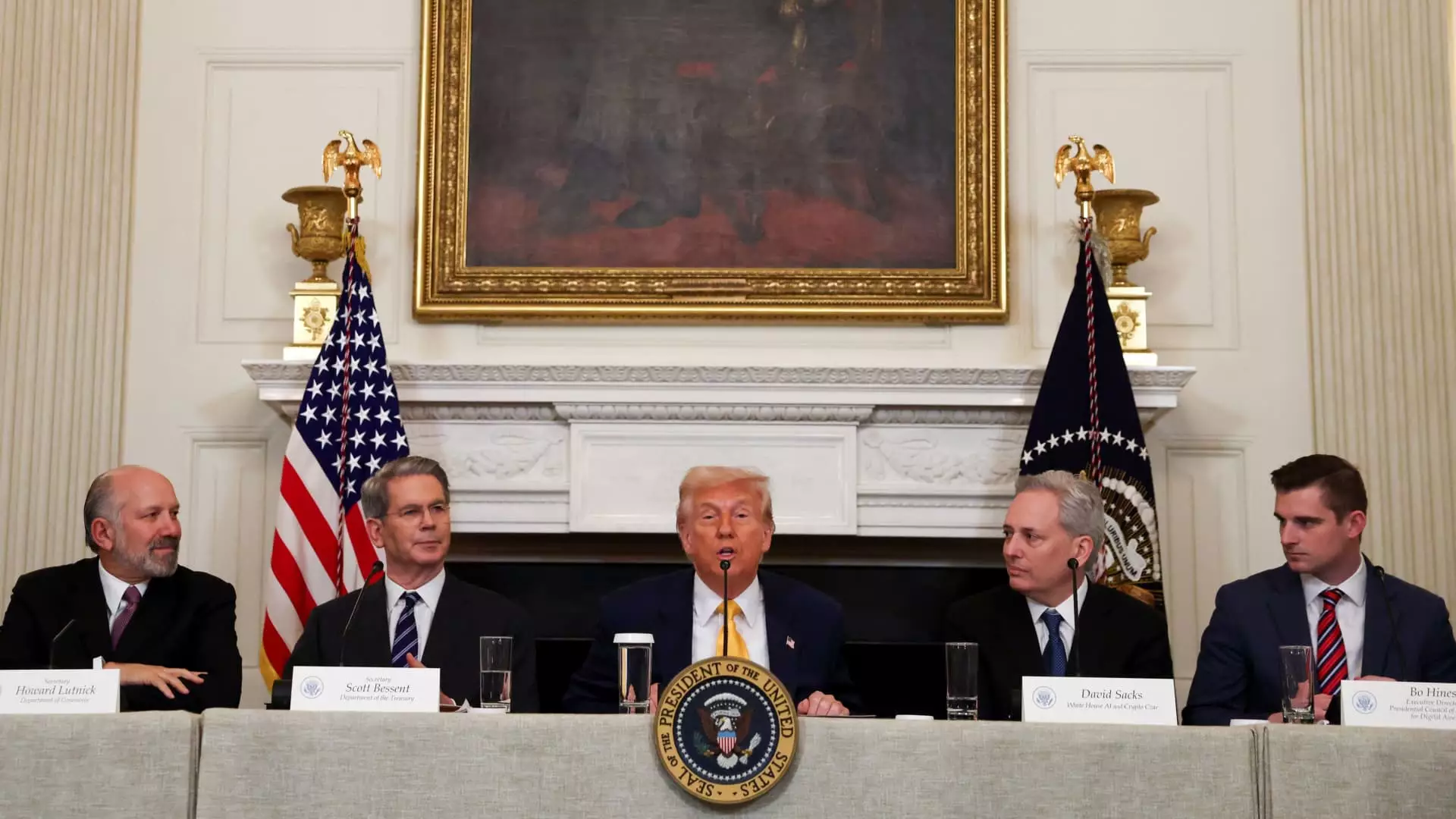The crypto landscape is a dynamic and rapidly evolving battleground full of disruptors and dreamers, yet here stands Bo Hines, a 29-year-old former football player with a freshly minted law degree, spearheading President Trump’s ambitious agenda for digital assets. He is hardly a typical representative of the crypto realm, lacking the deep-rooted experience in blockchain technology or financial markets. Nevertheless, his involvement raises significant questions about the direction of America’s crypto policy and whether he represents a genuine effort to innovate or hedge toward unregulated territory.
From Gridiron to Financial Frontier
Bo Hines’s rise from the turf of North Carolina State to the halls of power in Washington is remarkable not only for its speed but also for its sheer improbability. After unsuccessful bids for Congress in 2022 and 2024, one might wonder why he has suddenly become a key player in crypto policy. Hines claims that his interest in digital assets began during a college football game sponsored by BitPay in 2014. However, interest does not equate to expertise—a gap that many may find concerning as he navigates the intricate pathways of financial regulation.
His position under the tutelage of former venture capitalist David Sacks—now dubbed the crypto czar—further complicates his profile. Can one really expect meaningful contributions from a candidate who has yet to win a single election? This is particularly worrying as the U.S. strives to align itself with the accelerating pace of blockchain technology while being represented by a relative newcomer to the field.
The Clash of Interests and Regulation
Hines and his team are reportedly focused on dismantling what they term “Operation Choke Point 2.0,” which they argue represents a concerted effort by legacy financial institutions to suppress crypto innovation. He paints a picture of a valiant fight against bureaucratic enemies, yet this narrative raises eyebrows. The term “lawfare” suggests that Hines sees governmental oversight as an unnecessary hindrance rather than a necessary framework to foster trust in the emerging digital economy. This perspective is both liberating and alarming—freeing entrepreneurs from red tape but potentially plunging consumers into a sea of unregulated waters.
The rhetoric surrounding the potential “dismantling” of regulations strikes a dissonant chord. In a field rife with fraud and abuse, is it wise for Hines and his team to push for expedited reforms that could inadvertently exacerbate these very issues? It is essential to scrutinize whether such actions would prioritize corporate freedom over consumer protection, a delicate balance that often gets overlooked in the rush toward innovation.
A ‘Gold Standard’ in Bitcoin Vision
In Hines’s mind, Bitcoin occupies the pedestal of “digital gold,” and he is eager to amass as much of it as possible for the American populace. He posits that this endeavor could be executed without costing taxpayers a dime. But how can it be justified that taxpayers may not bear the brunt indirectly through inflated asset prices or market instabilities? Moreover, his mention of “budget-neutral” purchases raises questions about sourcing these funds—can we genuinely believe that the government can delve into crypto without the specter of fiscal irresponsibility looming large?
One particularly eyebrow-raising proposal is to utilize the unrealized value of U.S. gold reserves to acquire crypto. While such strategies may sound innovative, a deeper scrutiny unveils potential pitfalls. This approach does not just touch on financial logistics; it invokes national security concerns, market health, and how the government balances its portfolio.
The Question of Credibility
Hines repeatedly emphasizes that he is fully divested from crypto investments, casting a shadow of doubt over the motivations of others within the working group. This distance from the market raises important judgments regarding the objectivity embedded within their agendas. Transparency is essential; if leaders are not personally invested in the assets they regulate, can they be trusted to make decisions that will authentically benefit the market?
Furthermore, Hines’s normalization of Trump’s own financial entanglements in the crypto space is troubling. When Hines asserts, “He’s an American citizen. He has a right to engage in any market that he wants to,” it exposes a hypocrisy that could be devastating for public trust. In a political landscape that often seems riddled with conflicts of interest, how can we reconcile the possible intertwining of governance with personal financial gain?
Bipartisanship or Another Stalemate?
Interestingly, Hines spoke positively about recent bipartisan movement within Congress regarding stablecoin legislation. While he views this as a monumental shift, one must ponder if this is a genuine commitment to reform or simply political maneuvering to stake claims and appease both sides. The essence of America’s crypto ambitions hangs in the balance, and an administration lacking a coherent strategy risks jeopardizing the very potential it seeks to unlock.
In this brave new world of digital finance, the juxtaposition between innovation and regulation cannot be overstated. As lesser-known players like Hines step into vital roles, their capability to navigate complex, often contradictory landscapes will ultimately determine not only their own success but that of the nation’s digital future as a whole. In a world where intellect and experience must lead the charge, the question remains: is Hines truly up to the task, or is America merely placing its hopes on the latest political player in a game of high stakes?

